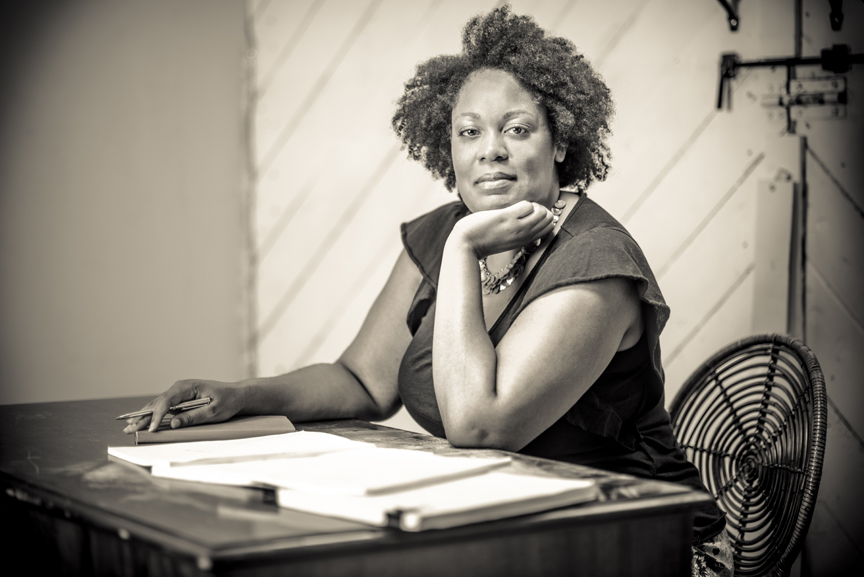|
"After one of my plays came out, I had mixed reviews, some bad and some good. One day, it dawned on me. I thought, "I wrote a play and he wrote a review, and that's the difference between him and me." ~~Steve Martin
I love this quote by Steve Martin. He might have meant something entirely different by it, but to me it reads that each writer made an equal contribution to the American Theatre. The difference in their art is one of form. It gave me such peace when I read it. There is a scene in THE HAMPTON YEARS when an art critic admonishes a mural painted by John Biggers. The mural is the Dying Soldier, pictured above. The review is scathing, racially charged and reflective of the prejudicial standards of the time period. John Biggers paints a mural. This art critic writes a review. However, the difference between them is vast. Remember, it's the 1940’s. Jim Crow laws dictate every aspect of race relations and the world is not yet ready for Black Artists to paint their experiences or reflect society in a critical way. The critic upholds the status quo and I believe he’s doing so in an attempt to save the future of art. It was a thrilling scene to write. Because, however much I agree or disagree with the critic, this is a scene about honor, integrity, a desire to uphold a standard and a great love for art. On Wednesday, my play THE HAMPTONS YEARS will open to previews at Theater J. Set at Virginia’s Hampton University during World War II, my play follows the growth and development of African American artists John Biggers and Samella Lewis under the tutelage of Austrian Jewish refugee painter and educator Viktor Lowenfeld. The process of getting this script from page-to-stage has been nothing short of extraordinary. My values and writing skills have been tested, honed and defined. What’s more, I’ve found myself living the plot of my play when UDC announced that it was discontinuing the Theater Arts Program. And working with Shirley Serotsky (Theater J’s Associate Artistic Director) and Otis Ramsey-Zoe (Dramaturg) has been … well, every playwright on this planet should be so fortunate. As with every play I’ve ever written, I have such great hopes for it. I hope that the lives and experiences of these artists inspire everyone who has ever had a dream and faced great challenges to see them realized. I hope that writers of color feel empowered to tell the stories of their people. I hope that theatres feel encouraged not only to program plays written by women, but also plays written by Black playwrights that explore Black history and culture. We have four preview performances before opening night. Four performances to work out any last minute kinks in the production or the script before press is invited. Each night, audiences will have two hours to experience and evaluate what it took me a year and seven months, but really my entire life, to write. I plan to watch it Wednesday and Thursday before working through additional rewrites. I’ll repeat this process on Saturday and Sunday into Monday. This way, I’m not writing on impulse. And this way, I can meet opening night with equal amounts of joy, fear, and confidence. Joy, because this will be my first regional production. Fear, because this will be my first regional production. Confidence, because I’ve worked my ass off and so has everyone else on this artistic and production team. Three months after the play closes, I will read what the critics have said about it. Now, don’t get me wrong, I enjoy critical analysis. I believe the role of the critic is essential. I believe that artists and critics should be conscious of the work we create and know how to frame it within a contemporary, historical, socio-economic, political, racial/ethnic and geographical context. However, because art is inextricably linked to commerce, the relationship between the artist and the critics is a troubled one. The weight of a review is measured in dollar signs and its merit is based on how well or poorly a playwright can trade their efforts on audience attendance, grants and donations. And just as problematic, for a woman playwright of color, is America's longstanding issues with race and gender. Especially, if a reviewer lacks social awareness and race consciousness. But I believe our very best theatre critics write from a place of honor, integrity, a desire to uphold a standard and a great love for theatre. And this is why I've been so excited to connect with the Women Theatre Critics of D.C. and present this series. In my next post, I'll introduce you to the women being featured and share their stories with you over the course of the next few days. I hope you'll enjoy learning about their lives, careers and ambitions as much as I have.
0 Comments
Your comment will be posted after it is approved.
Leave a Reply. |
My BlogI'm a playwright, dramaturg, and teaching artist. It is here where you'll find my queries and musings on life, theater and the world. My posts advocate for diversity, inclusion, and equity in the American Theatre and updates on my own work. Please enjoy!
Categories
All
Archives
June 2020
Reading List
|
